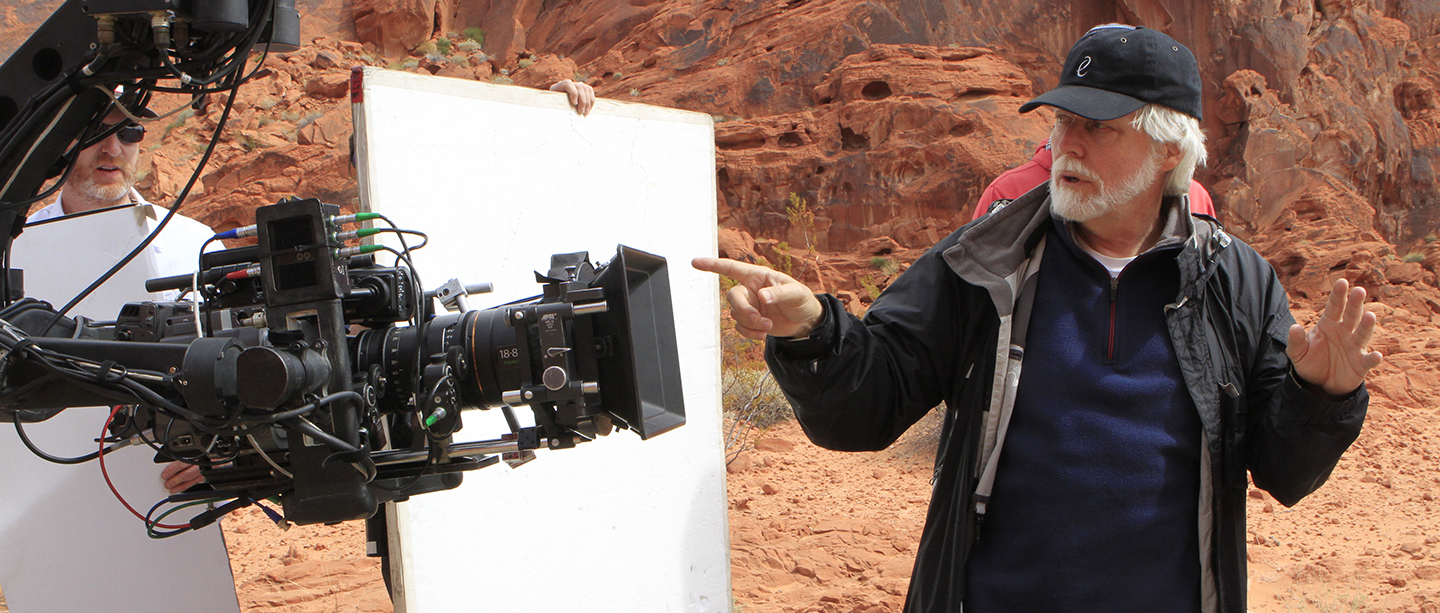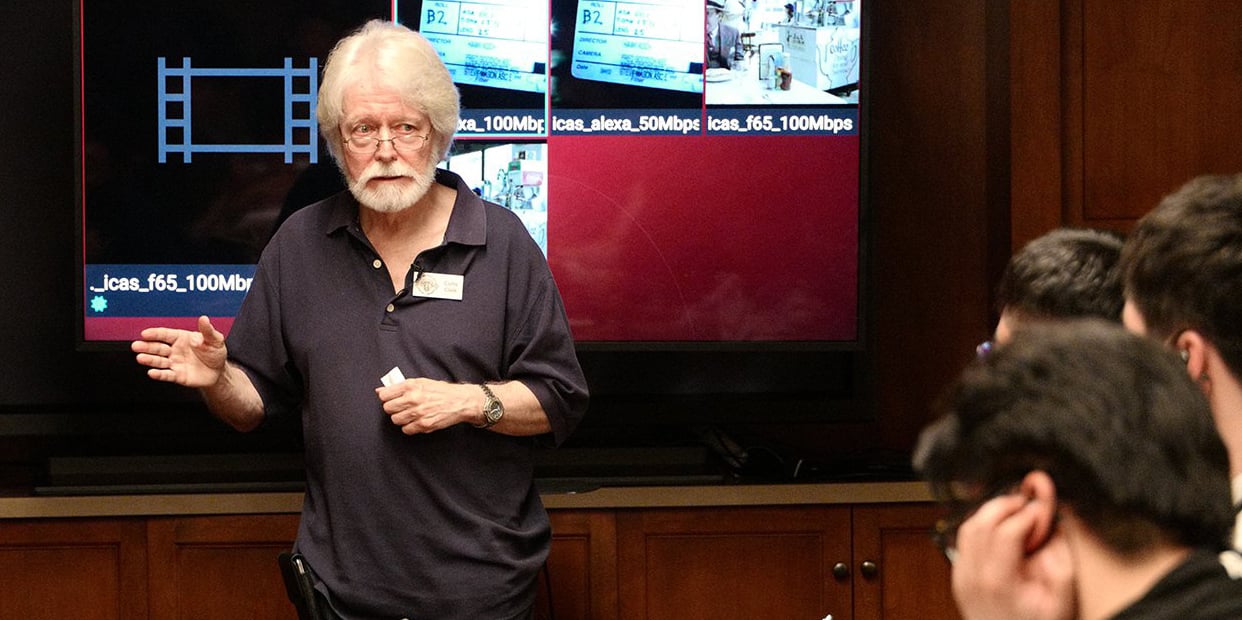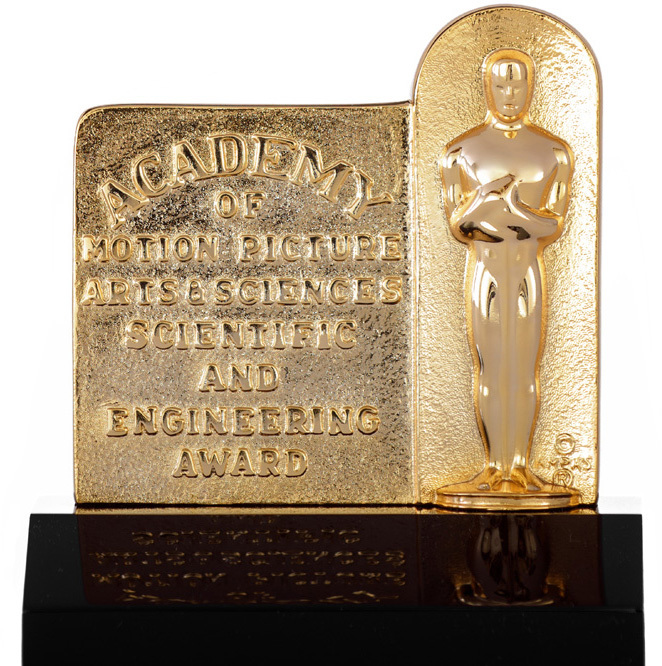
Curtis Clark, ASC To Be Honored at 2018 Sci-Tech Awards
The cinematographer will receive the prestigious John A. Bonner Award during the annual AMPAS ceremony on February 9.

The Academy of Motion Pictures Arts & Sciences (AMPAS) announced on December 12 that cinematographer Curtis Clark, ASC will receive the prestigious John A. Bonner Award during its annual Scientific and Technical Awards ceremony, to be held on February 9, 2019, at the Beverly Wilshire Hotel in Beverly Hills.
The prize is an acknowledgement of Clark’s years of dedicated work in helping to shape the future of motion-picture technology and educate the industry at large regarding the importance of staying informed on the multitude of technical issues that directly affect its ever-evolving creative process.
The chair of the ASC Motion Imaging Technology Council (MITC), Clark has been at the forefront of the field for more than two decades, in addition to being a leading director of photography.
Clark was honored with the ASC’s Presidents Award in 2013 for his indefatigable efforts in presiding over MITC and helping to shape the future of cinematography. Under Clark’s leadership, the Council has had a strong impact on the development of new creative methods and tools, thus protecting the prerogatives of the cinematographer and fulfilling the Society’s stated purpose: “…to advance the art of cinematography through artistry and technological progress, to exchange ideas and to cement a closer relationship among cinematographers.”
Clark was invited to join the ASC in 1991 after being proposed by Society members Stephen Burum, Allen Daviau and Steven Poster. As his career progressed, he began to focus more on commercials, where his deft handling of cutting-edge technologies in the service of eye-catching visuals came in handy.
The John A. Bonner Award is presented by the Academy Board of Governors upon the recommendation of the Scientific and Technical Awards Committee. It is given “in appreciation for outstanding service and dedication in upholding the high standards of the Academy.”
The first Award was given in 1977 but the honor is not necessarily presented every year.
In 1997, the Board of Governors voted to name the award in honor of sound engineer John A. Bonner, who had been director of special projects at Warner Hollywood Studios until his death in 1996. In 1994, Bonner himself was the last person to receive the Award before his name was attached.
“No one better represents the concept of service and dedication to the Academy than John Bonner,” said then-Academy President Arthur Hiller. “John was dedicated to the Academy for more than 30 years. His devotion to the Academy's Samuel Goldwyn Theater was legendary and his commitment to the Academy was simply extraordinary.”
Bonner served as an Academy Governor representing the Sound Branch and as chair of the Scientific and Technical Awards Committee and the Theater Sound Inspection Committee for many years.

“This is a great and very well-deserved honor for the tremendous amount of work that Curtis has performed to improve our industry,” says ASC Executive Director Eric Rodli, an associate member of the Society who is also co-chair of the MITC Next-Generation Cinema Display committee. “I just spoke to a member of the AMPAS Sci-Tech council who reiterated that the Academy recognized his many years of volunteering so much of his time and energy to leading the ASC’s Motion Imaging Technology Council.
“I was fortunate enough to be in a MITC meeting today with Curtis, and was able to surprise him with the news. I have also had the honor of working closely with Curtis since the founding of MITC, so that was very fun! Curtis, of course, gave all the credit to all the many amazing volunteers who have supported MITC over the years.”
MITC (or “My Tech”) includes numerous committees and working groups, each with an assigned task of working on key aspects of the production and postproduction workflow. The committees are: Advanced Imaging, Camera, DI, Digital Archive, Digital Restoration & Preservation, Lens, Metadata, Motion Imaging Workflow, Next Generation Cinema Display, Professional Monitors, SSIMWave Evaluation Working Group, UHDTV, Virtual Reality and Virtual Production.

MITC is widely recognized as a vital and influential motion-picture industry forum on digital motion-imaging technology and has developed a close working relationship with other film industry groups that share its mission. They include the AMPAS Science and Technology Council, the Society of Motion Picture and Television Engineers, Digital Cinema Initiatives, the Art Directors Guild, the Producers Guild of America, the Previsualization Society and the Visual Effects Society Technology Committee.
In addition to Clark, nine scientific and technical achievements represented by 27 individual award recipients will also be recognized by AMPAS during the February 9 Sci-Tech Awards ceremony.
“Each year, the Academy forms a diverse committee made up of nearly 60 experts on the technology of filmmaking tasked with examining the tools that artists use to create films,” Doug Roble, chair of the Scientific and Technical Awards Committee, said Wednesday in a statement. “This year, the committee is recognizing nine technologies from around the world. These extraordinary contributions to the science of filmmaking have elevated our art form to incredible new heights.”
TECHNICAL ACHIEVEMENT AWARDS (ACADEMY CERTIFICATES)
To Eric Dachs, Erik Bielefeldt, Craig Wood and Paul McReynolds for the design and development of the PIX System’s novel security mechanism for distributing media, which has enabled wide adoption of their remotely collaborative dailies-review system by the motion-picture industry.
To Per-Anders Edwards for the initial design and development of the MoGraph toolset in Cinema 4D for motion graphics, which provides a fast, non-destructive and intuitive workflow for motion designers to create animated 3D graphics, as used for title design and fictional user interfaces in motion pictures.
To Paul Miller for the software design, principal engineering and continued innovation, and to Marco Paolinifor the efficient, artist-friendly workflow design of the Silhouette rotoscope and paint system, which offers a comprehensive solution for painting, rotoscoping and image manipulation of high-resolution image sequences. Its fast, scalable and extensible architecture has resulted in wide adoption in postproduction.
To Paul Debevec, Tim Hawkins and Wan-Chun Ma for the invention of the Polarized Spherical Gradient Illumination facial appearance capture method, and to Xueming Yu for the design and engineering of the Light Stage X capture system. Polarized Spherical Gradient Illumination was a breakthrough in facial capture technology allowing shape and reflectance capture of an actor’s face with sub-millimeter detail, enabling the faithful recreation of hero character faces. The Light Stage X structure was the foundation for all subsequent innovation and has been the keystone of the method’s evolution into a production system.
To Thabo Beeler, Derek Bradley, Bernd Bickel and Markus Gross for the conception, design and engineering of the Medusa Performance Capture System, which creates exceptionally dense animated meshes without markers or makeup, pushing the boundaries of visual fidelity and productivity for character facial performances in motion pictures.
To Charles Loop for his influential research on the fundamental scientific properties of subdivision surfaces as 3D geometric modeling primitives. His 1987 master’s thesis, “Smooth Subdivision Surfaces Based on Triangles,” together with his subsequent research and publications, extended the theory of subdivision surfaces and inspired further development of methods that transformed the way digital artists represent 3D geometry throughout the motion-picture industry.

SCIENTIFIC AND ENGINEERING AWARDS (ACADEMY PLAQUES)
To David Simons, Daniel Wilk, James Acquavella, Michael Natkin and David Cotter for the design and development of the Adobe After Effects software for motion graphics. After Effects’ pioneering use of consumer hardware to host an application that is extensible, efficient and artist-focused has made it the preeminent motion graphics tool in film production, allowing motion designers to create complex animated elements for title design, screen graphics and fictional user interfaces.
To Thomas Knoll and John Knoll for the original architecture, design and development, and to Mark Hamburg for his continued development and engineering of Adobe Photoshop. Its efficient, extensible architecture, innovative virtual-memory design and powerful layering system introduced a new level of user interactivity, which led to its adoption as the preferred artistic tool for digital painting and image manipulation across the motion-picture industry.
To Ed Catmull for the original concept, and to Tony DeRose and Jos Stam for their pioneering advancement of the underlying science of subdivision surfaces as 3D geometric modeling primitives. Their creation of essential geometric operations and sustained research on the fundamental mathematics of subdivision surfaces helped transform the way digital artists represent 3D geometry throughout the motion-picture industry.






